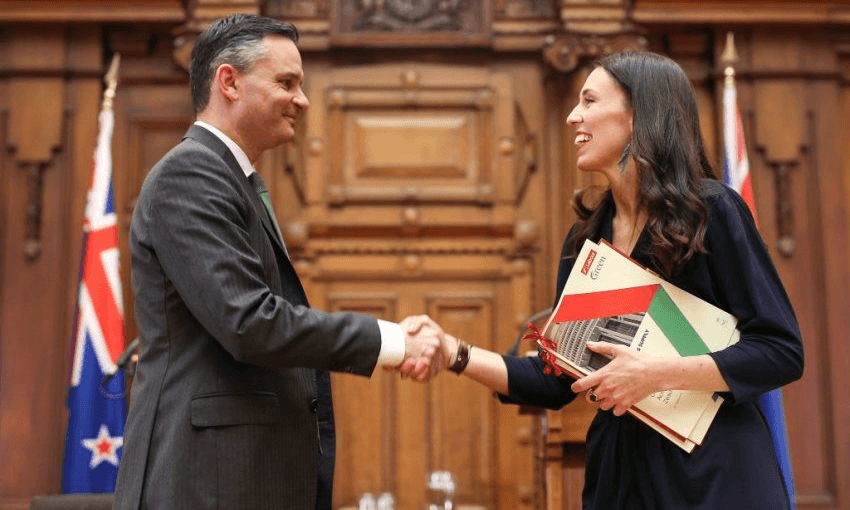With the Greens or without them, Labour is expected to form a new government next week. As negotiations between the two parties reach their conclusion, Justin Giovannetti walks us through how the next government will be formed.
Labour and the Greens have held their final meeting negotiating the shape of New Zealand’s next government. Nearly 57% of the country voted for the two parties and while a formal coalition is highly unlikely given that Labour has the numbers to govern alone should it so choose, the two have been clear they want to work together.
The deal that the two parties have hammered out this and last week is contingent, however, on winning support from the Green membership. A discussion and vote among 150 delegates assigned the task is expected to be held on Saturday afternoon, but final plans have yet to be confirmed by the party.
The prospect of working with Labour has divided the party’s activists. The Zoom call in which the party delegates debate the deal and vote could be long and raucous. Importantly, it requires support of 75% of delegates to proceed. If more than a quarter of those 150 delegates don’t give their seal of approval, the Greens will sit in opposition. There won’t be a second attempt to salvage an agreement.
The final deal is expected to be announced by Sunday at the latest. It is unlikely that the shape of the deal, and the vote itself, survives unleaked until then.
What the Greens will be discussing is expected to be a limited partnership. Jacinda Ardern and the Labour Party hold all the cards after a commanding victory earlier this month. Through a series of leaks, the party has in effect ruled out a coalition that would bind it fully to the Green caucus.
The campaigns waged over the past two months inform the positions being taken by the parties. The Greens campaigned on supporting Labour and making Ardern more progressive. Voters who cast a list ballot for a party that promised to support Ardern could be disappointed if it chooses the opposition benches. As for Labour, they’ve committed to a manifesto that rules out most of the promises put forward by the Greens. There could be significant tension in the years to come.
Over platters of biscuits in four daily 90-minute meetings, the two sides hammered out an agreement about what role the Greens can play. A meeting planned for Friday was called off after both sides decided they didn’t need it. Labour doesn’t need support from the Greens and can govern alone with a healthy majority. However, Ardern’s side is looking to borrow some of the Green Party’s talent and enthusiasm over the next three years and demonstrate a collegial approach.
Former prime minister Helen Clark has said a deal makes sense for the long-term, Labour and the Greens will need each other in years to come.
Details about the talks have been scarce. The Green co-leaders have emerged daily to a press throng near parliament to say very little, beyond the talks being “constructive”. Statements from Ardern’s office about the day’s discussions have provided a lesson in bland writing.
A select few have sat at the negotiating table. On one side are Green co-leaders James Shaw and Marama Davidson, along with chief of staff Tory Whanau and three officials from the party. Holding the power on Labour’s side are Ardern, finance minister Grant Robertson, deputy leader Kelvin Davis, chief of staff Raj Nahna and the party’s policy adviser.
A host of different support configurations are available. There’s been significant speculation that Shaw has been offered the climate change position he’s held in the outgoing government, while Davidson is said to have been offered a ministerial portfolio. That could translate in fewer Green ministers, and less Green influence, than in the previous government. Given the results on election night, however, that’s how the cookie crumbles.





